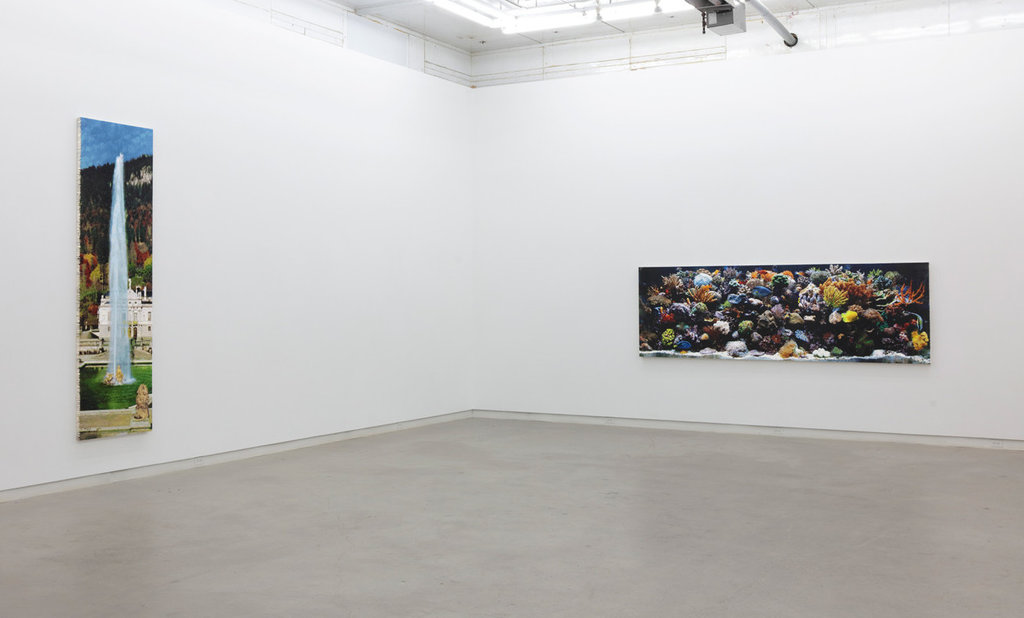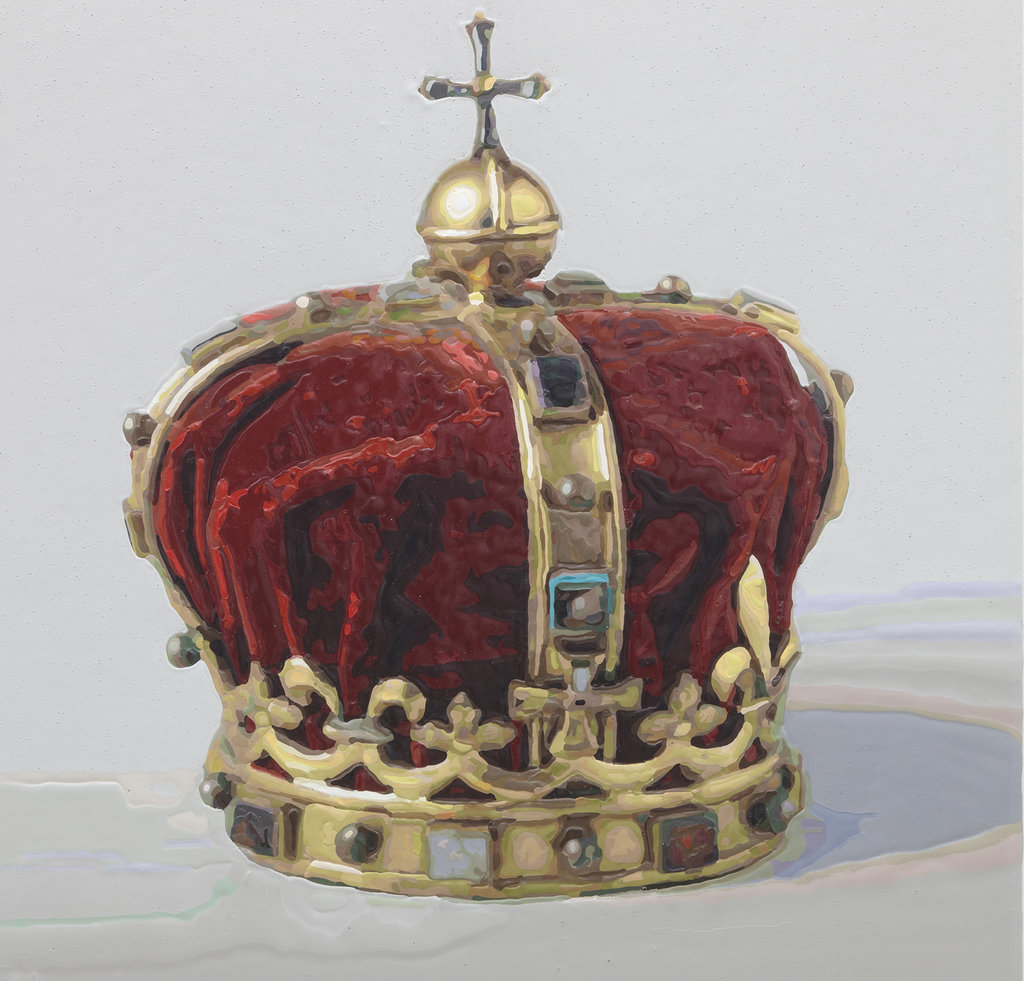FitzGerald’s New Paintings exhibition continues to explore seductive objects for traces of labour in the service of wealthy and powerful patrons. A Toronto artist, FitzGerald is dedicated to his own style of painting, a technique practised and refined over the past ten years that has met with success and recognition. New Paintings is FitzGerald’s fifth solo show at the Clint Roenisch Gallery.
New Paintings identifies an explicit representation of and curiosity with craftsmanship and history through an association with wealth and power. FitzGerald’s work is also a luxury item, a process that resists perfection composed of a rich application of paint which we are encouraged to view as a story. Utilizing computer software to enhance selected images, FitzGerald then transfers the resulting image onto his canvas and applies paint using a pouring technique. It is a painstakingly slow procedure, and some of the largest canvases take years to finish. FitzGerald puts extended amounts of time into researching and then painting them – literally living with them.
Immediately upon entering the Gallery space we are confronted by the Iron Age Skull and Crown, a very large canvas that stands out due to a rippling effect which is a product of FitzGerald’s pouring technique. The skull itself originated from a Celtic burial site excavated in modern day Kent, U.K. and dated to approximately 250-150 B.C. The skull might be of a druid, an ancient priest and a person of knowledge. Though not ostentatious on its surface, the bronze crown indicates to scholars the relative importance and high status of this individual from Britain’s antiquity, a fragment of historical significance that scholars continue to explore with interest.
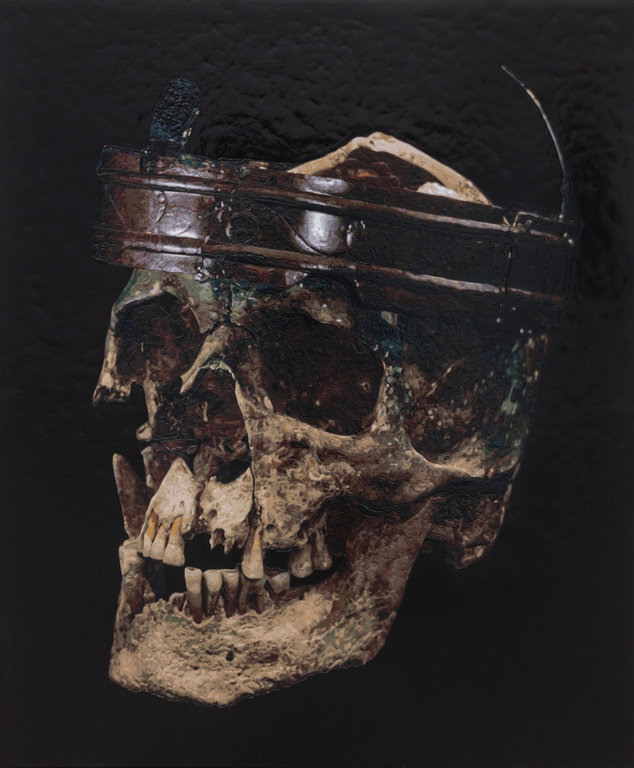
Unlike the Iron Age Skull, the Crown for the King of Adra, circa 1664, doesn’t represent kingship, wealth or prestige but rather the deceit of privileged men in history. The crown itself, made of highly polished brass and inlaid glass, was gifted by a British peer serving as Governor of the Royal African Company to the King of Adra in an effort to advance British interests in slavery as well as his own personal fortunes as facilitator. Through this parsimonious gift-giving, FitzGerald identifies that the wealthy are not and will not be exempt from scrutiny when their greed and deceit is exposed.
Malcolm Forbes’ Balloon, perfectly exemplifies frivolous ostentatious displays. The painting depicts the Forbes family estate, the 17th century Château de Balleroy in Normandy, France, alongside a massive hot air balloon replica of the Forbes’ country mansion. A prime representation of excessive wealth and power, FitzGerald underscores the epitome of 20th century eccentricity and vanity by a man whose claim to fame was inheriting his father’s vast business empire. There is something absurd about the way the huge balloon overshadows the real building in the background. It feels abnormal that a crowd moves underneath it unaware of its monstrous presence. The whole image is a big show-off from the extremely rich to amuse the poor.
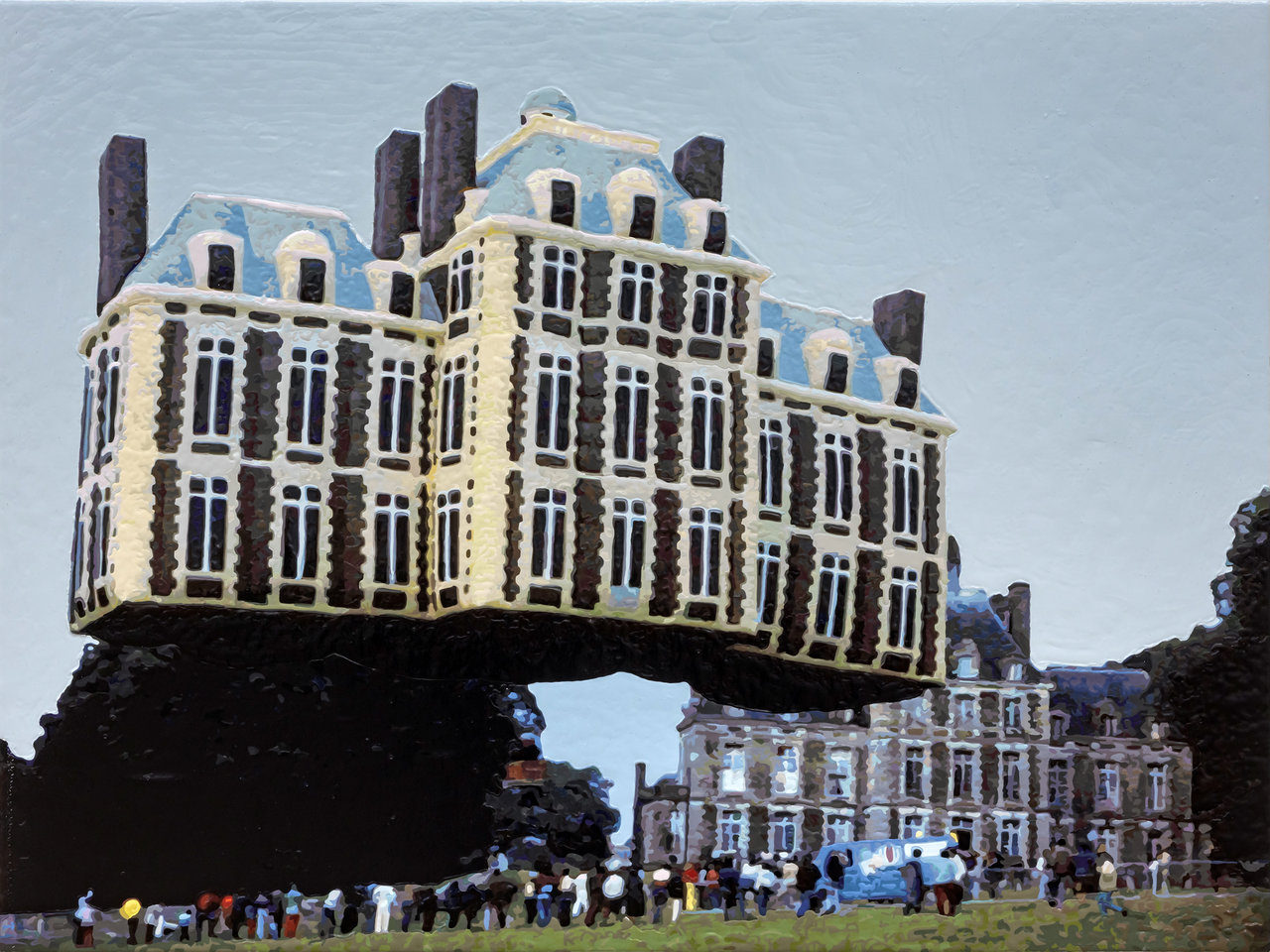
Fountain in Bavaria, depicting the neo-French Rococo style Linderhof Castle and Venus grotto, is in fact a tribute to the labours of the craftsmen and engineers who oversaw its construction for the wealthy 19th century King of Bavaria, Ludwig II. The luminous green of the water in the pool of the fountain is a product of an electrical installation, powered by one of the first plants in Bavaria at great expense – one of many architectural extravagances carried out by Ludwig II and paid for by the people of Bavaria. The Fountain is also a statement about seizing power away from the corrupt and self-serving greed of the rich, just as Ludwig II was removed from power. The very narrow format of this canvas cuts out almost everything and focuses on the water, framing its shape as it bullets toward the sky.
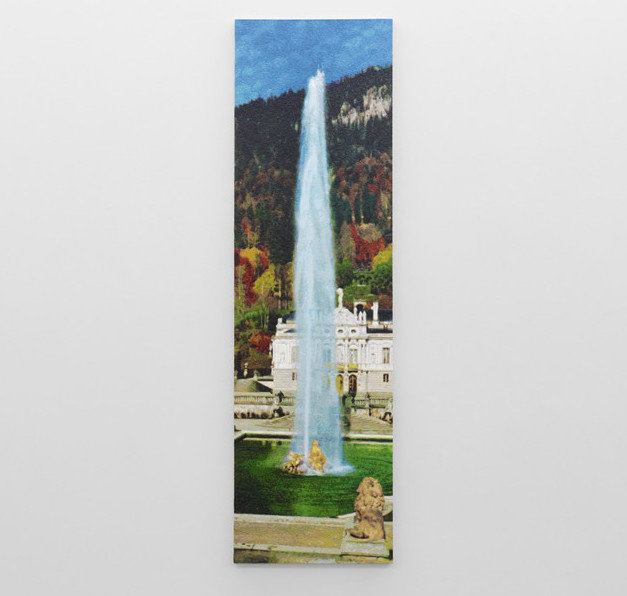
On the main wall of the larger gallery, Aquarium commands the viewer’s attention due to its size, beautiful colouring and high photo realism. It is all about forms. It is not one single image but a sequence of forms against the backdrop. In a 240-gallon tank there are 53 exotic species crowded in with rare corals. There is hardly any space to move. All living things are doomed in this “paradise.” Looking at the stunning, vivid colors, the rich, almost three-dimensional paint application and listening to the peaceful, soft music from the background – you almost believe in this beauty. But the harsh reality behind this amusement is that private wealth, for the sake of ownership and aestheticism, endangers rare animals by removing them from their natural ecosystem.
As the press release states, FitzGerald’s work can be compared to a contemporary court painter, documenting the irresponsible extravagancies of the wealthy and powerful but through the socio-political sensitivity of a 21th century artist.
Keren Sedmina
Images are courtesy of Clint Roenisch Gallery
*Exhibition information: Dorian FitzGerald, New Paintings, April 4 – May 18, 2019, Clint Roenisch Gallery, 190 St. Helens Avenue, Toronto. Gallery hours: Wed – Sun 12 – 6 pm.

